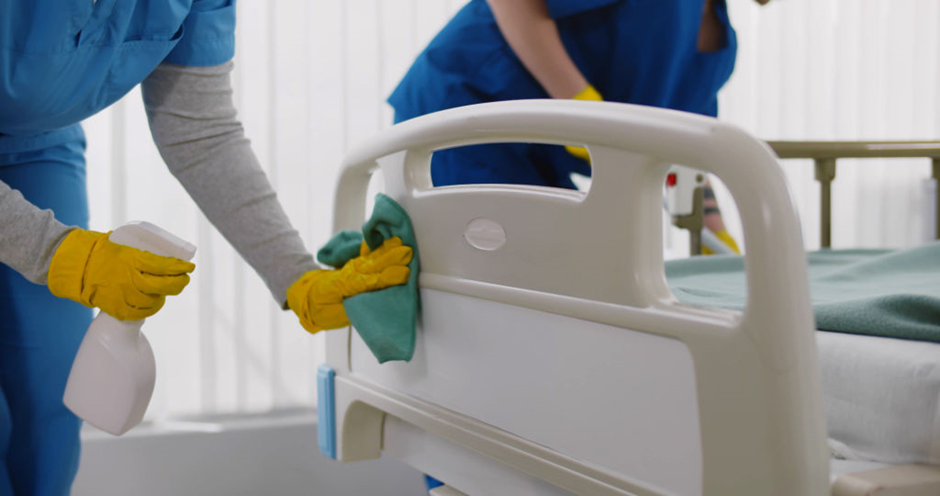Maintaining high standards of cleaning and hygiene in hospitals is critical to ensuring patient safety, preventing the spread of infections, and creating a healthy environment for patients, staff, and visitors. Hospitals must adhere to rigorous cleaning protocols and employ best practices to meet these objectives. This article explores the best practices for hospital cleaning and hygiene, emphasizing the importance of systematic procedures, proper training, and the use of appropriate cleaning products and techniques.

Importance of Hospital Cleaning and Hygiene
Preventing Infections
One of the primary reasons for stringent cleaning protocols in hospitals is to prevent healthcare-associated infections (HAIs). HAIs can be transmitted through contaminated surfaces, equipment, and hands. Effective cleaning and disinfection practices significantly reduce the risk of these infections, safeguarding patient health.
Ensuring Patient Safety
A clean and hygienic hospital environment is essential for patient safety. Patients with compromised immune systems are particularly vulnerable to infections, making thorough cleaning and disinfection crucial in protecting them from additional health risks.
Enhancing Staff and Visitor Safety
Proper cleaning practices also protect hospital staff and visitors from potential infections. A well-maintained hospital environment minimizes the risk of disease transmission, contributing to the overall well-being of everyone within the facility.
Key Components of Hospital Cleaning
Routine Cleaning
Routine cleaning involves regular cleaning activities performed daily or several times a day, depending on the area and usage. This includes cleaning floors, surfaces, restrooms, and common areas. Routine cleaning helps maintain a baseline level of cleanliness and prevents the accumulation of dirt and germs.
Terminal Cleaning
Terminal cleaning is a thorough cleaning process conducted after a patient is discharged, particularly from an isolation room or an area exposed to infectious agents. This involves cleaning and disinfecting all surfaces, equipment, and linens to ensure the environment is safe for the next patient.
Specialized Cleaning
Certain areas within a hospital, such as operating rooms, intensive care units (ICUs), and laboratories, require specialized cleaning protocols. These areas are highly sensitive and demand meticulous attention to detail to prevent contamination and ensure a sterile environment.
Best Practices for Hospital Cleaning and Hygiene
Developing a Comprehensive Cleaning Plan
A well-structured cleaning plan is the foundation of effective hospital hygiene. This plan should outline cleaning schedules, procedures, and responsibilities for different areas of the hospital. It should also include protocols for handling biohazardous waste and guidelines for using cleaning products and equipment.
Using Appropriate Cleaning Products
Using the right cleaning products is crucial for effective hospital cleaning. Disinfectants and detergents should be approved for healthcare settings and capable of eliminating a wide range of pathogens. It's essential to follow manufacturer instructions for dilution, contact time, and application methods to ensure optimal efficacy.
Implementing Standardized Cleaning Procedures
Standardized cleaning procedures help maintain consistency and quality across the hospital. These procedures should detail the steps for cleaning different surfaces and equipment, including the use of color-coded cleaning tools to prevent cross-contamination. For example, separate cloths and mops should be used for different areas, such as patient rooms and restrooms.
Training and Education for Cleaning Staff
Proper training and ongoing education for cleaning staff are vital to ensure they understand and follow established protocols. Training should cover the correct use of cleaning products, equipment, and protective gear, as well as the importance of hand hygiene and infection control measures.
Hand Hygiene Practices
Hand hygiene is one of the most effective ways to prevent the spread of infections. Hospitals should promote regular handwashing with soap and water or the use of alcohol-based hand sanitizers among staff, patients, and visitors. Hand hygiene stations should be readily accessible throughout the hospital.
Monitoring and Auditing Cleaning Practices
Regular monitoring and auditing of cleaning practices help ensure compliance with established protocols. Hospitals should conduct routine inspections, assess cleaning performance, and address any deficiencies promptly. Feedback from audits can be used to improve procedures and training programs.
Incorporating Technology and Innovation
Advancements in cleaning technology can enhance hospital hygiene. For example, ultraviolet (UV) light disinfection systems and electrostatic sprayers can effectively eliminate pathogens on surfaces and in the air. Incorporating these technologies into cleaning routines can improve overall cleanliness and infection control.
Managing Waste Disposal
Proper waste disposal is a critical aspect of hospital hygiene. Hospitals generate various types of waste, including biohazardous, sharps, and pharmaceutical waste. Each type of waste requires specific handling and disposal procedures to prevent contamination and ensure safety.
Promoting a Culture of Cleanliness
Creating a culture of cleanliness within the hospital is essential for maintaining high hygiene standards. This involves fostering a sense of responsibility among all staff members, encouraging them to take ownership of their roles in maintaining a clean environment. Regular communication and training can reinforce the importance of cleanliness and hygiene.
Conclusion
Maintaining high standards of cleaning and hygiene in hospitals is crucial for preventing infections, ensuring patient safety, and protecting staff and visitors. By developing comprehensive cleaning plans, using appropriate products, implementing standardized procedures, and promoting hand hygiene, hospitals can create a safe and healthy environment. Ongoing training, monitoring, and the incorporation of innovative technologies further enhance cleaning practices. Ultimately, a culture of cleanliness and responsibility among all hospital staff is key to achieving and sustaining optimal hygiene standards.


